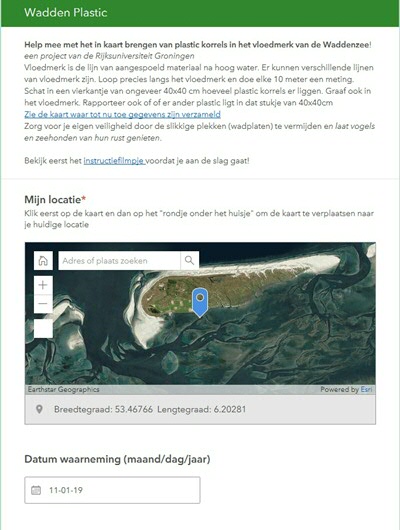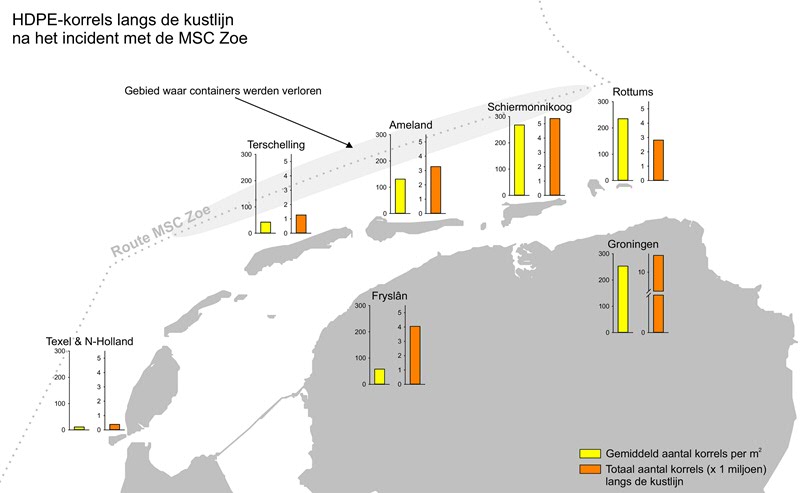First Waddenplastic.nl research outcomes
Early January, researchers from the University of Groningen (UG) launched the Waddenplastic.nl web application, with which everyone can help to map the plastic granules that have washed ashore after the MSC Zoe lost around 345 containers on the North Sea. After more than two months, the results now show that the North Sea beach of Schiermonnikoog has the highest concentration of microplastics, followed by the Groningen Wadden coast and the beaches of the uninhabited islands of Rottumeroog and Rottumerplaat. The clean-up of the granules on Schiermonnikoog will start next week.

After the container disaster on the night of 1 to 2 January, a lot of litter washed ashore on Schiermonnikoog, Ameland, Terschelling, Vlieland and the Frisian/Groningen coast. While the larger items could be disposed of relatively easily and quickly, there are still many small plastic polystyrene and HDPE granules at the high water mark. It is unclear how many granules ended up in the sea and washed ashore or what the consequences for the environment will be eventually. There is a risk that this plastic will continue its way down the food chain, especially if it disintegrates further.
300 counts
In order to map the size and distribution of the granules, UG researchers developed the Waddenplastic.nl web application. Prof. Tjisse van der Heide of the University of Groningen and the Royal Netherlands Institute for Sea Research (NIOZ): ‘This app allows anyone with a smartphone to help to map the plastic pollution by counting the granules in a 40x40 cm area and submitting their count and location in the app.’ Meanwhile, almost 300 ‘sample points’ have been collected along the entire northern Dutch coastline in this way, which means that Wadden enthusiasts have performed 300 counts so far. These sample points are visualized on the online map.
A total of 24 million
The researchers have made a preliminary analysis of the data collected so far. The results show that the highest concentration of granules – about 268 granules per square metre on average – can be found at the high water mark of the North Sea beach on Schiermonnikoog. Schiermonnikoog is closely followed by the Groningen shore (253 granules per m2) and the beaches of the uninhabited islands of Rottumeroog and Rottumerplaat (235 granules per m2). Since Groningen has a much longer coastline than the Wadden islands, the number of granules is the highest there, totalling more than 12.5 million. The beaches of Schiermonnikoog are littered with almost 5.5 million granules. Van der Heide: ‘We estimate that the total number of plastic granules in the eastern Wadden area is well over 24 million.’
Cleaning up
The small granules are very difficult to clean up. The clean-up on Schiermonnikoog will start next week and will be carried out by BDS, a company from Harlingen commissioned by nature conservation organization Natuurmonumenten and the Municipality of Schiermonnikoog. For this purpose, the company will be using a maaiklepelzuiger, a special type of ‘vacuum cleaner’. This device will suck up the sediments at the high water mark, which contain most of the granules. On its own premises, BDS will then sift the granules from the sediment for separate processing. The cleaning device cannot remove plastic granules that are in the sand or that have ended up in the salt marshes.

More news
-
18 December 2025
Why innovate, and for whom?
-
17 December 2025
Ben Feringa wins Feynman Prize
-
16 December 2025
FEBS Excellence Award 2025 for Alexander Belyy
